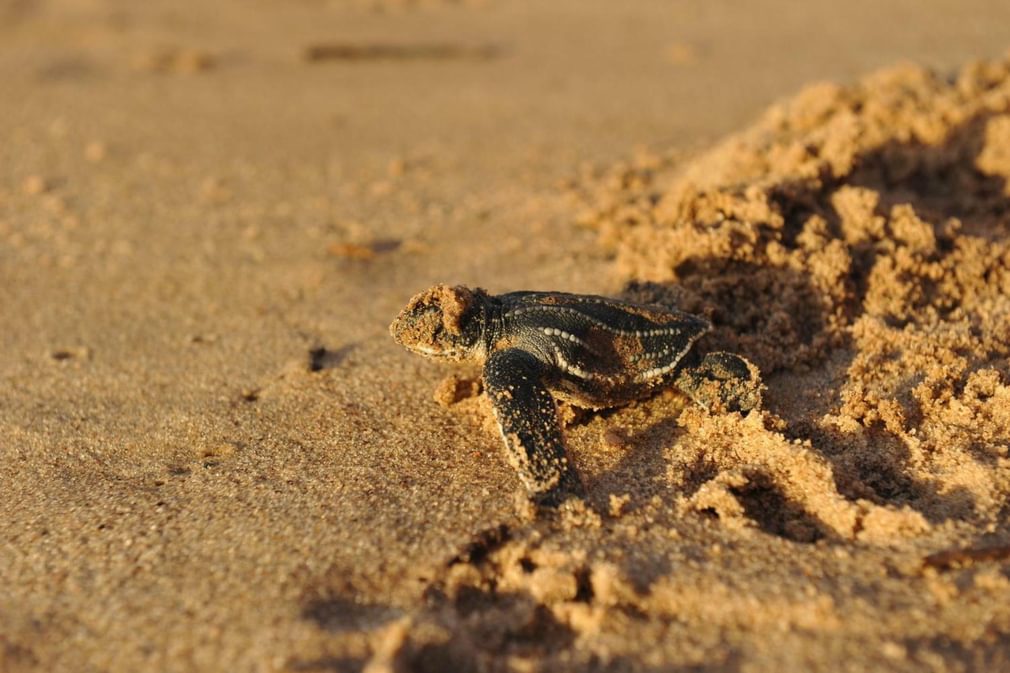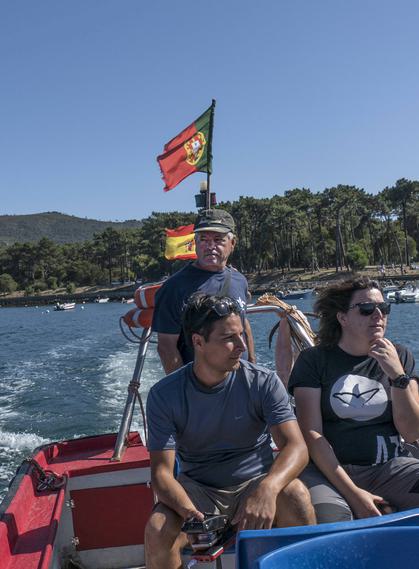What are the best turtle nesting spots in Costa Rica

Costa Rica is home to lush turtle nesting beaches along many unspoilt stretches of its lovely coastline. Leatherback, Green, Hawksbill, Olive Ridley and Loggerheads are the primary sea turtle species that live, nest and hatch here.
It is hard in such a tropical paradise to imagine that these 110-million-year-old species are today in danger of extinction. Natural predation from animals contributes of course, but above all, severe human interference such as egg poaching, industrial fishing and selling turtle shell products are what puts them in jeopardy.
Therefore, in order to preserve sea turtle species, Costa Rica has promoted various conservation programs lately, making this one of the country's most important ecological initiatives today. Most hotels on the coastline contribute to the sea turtle conservation by offering tours to raise awareness. Protecting turtle nesting habitats is essential to conserving these magnificent and ancient sea creatures.
In Costa Rica sea turtles can be seen year-round along both Pacific and Atlantic coastlines; here we've listed the most important nesting beaches around the country:
Ostional
Located on the Nicoya Peninsula, the Ostional Wildlife Refuge is one of the primary nesting sites for Olive Ridley turtles in the world. The impressive arribadas (or 'arrivals') of thousands of turtles generally take place once a month for three to five days. Ostional is clearly one of our favourite sites where you can observe sea turtles nesting during the entire year (though the nesting peak is August through October). Occasionally, there is also nesting of the Leatherback turtle and the Pacific green turtle here too.
Tours and volunteer programs are available for those who want to help by relocating threatened eggs to hatcheries. Interestingly, there is also a program for legal and rational utilization of the eggs during the first hours of arrival of the Olive Ridley turtle, which is authorized and supervised by MINAE (Costa Rica Energy and Environment Ministry).
Playa Nancite
Located within Santa Rosa National Park in Guanacaste, Playa Nancite is the other important nesting site for Olive Ridley turtles in Costa Rica. The beach is remote and requires some 4x4, hiking and permission from the ranger station to access, but the challenge is worth it and at the end you'll see turtles come in thousands to nest on the beach.
Las Baulas National Park
Located in the Nicoya Peninsula too, this is one of the easiest turtle nesting beaches to access in the country. The 3,6-km-long Playa Grande is the most important zone for giant Leatherback turtles nesting in the whole American continent (from mid-October through mid-February).
Due to the critical risk of extinction, conservation and protection measures have been taken for these marine giants - which by the way are the largest reptile in the world - with large participation of the neighboring community of Matapalo.
Guided night tours are occasionally available, allowing visitors to monitor nesting, measure and tag them, record locations, and count eggs to help the researchers with their studies.
Tortuguero National Park
Located on the Caribbean coast, the park is probably the best known turtle-nesting site in Costa Rica. Home to 35 kilometers of beaches, it hosts the largest Green turtle rookery in the Western Hemisphere and also important nesting populations of Leatherback and Hawksbill turtles.
The best months to visit Tortuguero are between March and June, in order to observe the spawning of the Leatherback turtles and between July and October to watch the Green turtles.
Today a sanctuary for endangered turtles, Tortuguero offers turtle-awareness programs in the surrounding villages, and educational programs for visitors. Access to the beach must be made accompanied by authorized local guides.
Gandoca Manzanillo Wildlife Refuge
Located on the southern Caribbean coast, in the Talamanca county of Limón province, several species of turtles nest here (Atlantic Green, Hawksbill, Leatherback and Loggerhead). Leatherback turtles are the most notable of these species and nest from March through July.
The refuge also has a great diversity of ecological areas from beautiful beaches to the important mangroves of the Gandoca Lagoon. Ecotourism management has greatly improved the economy of the local community.
Pacuare
Located on the Caribbean coast of Costa Rica, at the northern part of Limon province, the Pacuare Riverbank is a Biological Reserve and an important nesting site for the Leatherback and Green turtles. Hawksbill and Loggerhead turtles occasionally nest on this beach too.
A conservation program handled by the Tortuga Feliz ('Happy Turtle'), a non-profit organization, helped the protection of endangered marine turtle species while improving the living conditions of the community by establishing an economical income through ecotourism and volunteer programs (so that trade in turtle eggs becomes unnecessary).
Parismina
Located at the delta of the Parismina River in the Caribbean coast of Costa Rica, Parismina is a great place to see four types (Leatherback, Green, Hawksbill and Loggerhead) of sea turtle nest on the beaches.
Turtle season is longer here than in Tortuguero, due to the large number of Leatherback sea turtles that nest from March until June, and it is also possible to see individual turtles year round.
Since 2001 volunteers collect the eggs to take them to the hatcheries where they are guarded and protected from poachers. 'Salvemos las Tortugas de Parismina' is an exemplary volunteer community project, in which the visit is intended to be a real conservation effort by the tourists - tourism has become the main activity here.
Sign up to our Costa Rica Expert Guide »
If ever you decide to join a turtle nesting tour in Costa Rica, know that most visits are restricted to a certain number of people, so it's important to enquire about availability. Tours are often organized at least three hours before the peak of the high tide and may extend up to three hours after it. Generally, it consists of three phases: the digging of the nest, the egg laying, and the covering of the nest. In some places it's also possible to watch the turtle camouflage the nest and return to the sea. But please, do keep in mind that this is a natural event so it will always depend according to the unexpected nature - it's essential to be patient.
And it will be very important to follow the guide's instructions too, in order to enjoy this wonderful experience without harming the turtles.
Here are a few important rules for the responsible observation of nesting:
Walk through the moist part of the beach, so you don't interfere with the nesting occurring up in the dunes nor with the hatchlings emerging from the nest.
Keep quiet and walk slowly. Sea turtles are sensitive to ground vibrations.
Do not approach the turtles when they are arriving to the coast.
If you observe tracks that lead into firm land, there's probably a turtle nesting or intending to nest! If parallel tracks are visible, the turtle has probably emerged and returned to the sea.
Do not approach turtles in the beach that haven't initiated spawning. But if they have completed - and the guide authorises it - you may approach a little to observe the turtle from behind.
Do not illuminate the turtle's face with artificial light (nor take pictures with a flash). And use a red filter on your torch.
Retreat from the turtle if it seems uncomfortable with your presence.
The turtle eggs and hatchlings must not be disturbed or manipulated (unless it's by a person authorized to do so).
Our Costa Rica holidays Get in touch Subscribe to The Pothole
The Pothole is Pura Aventura's popular monthly email. We share what we love, what interests us and what we find challenging. And we don't Photoshop out the bits everyone else does. We like to think our considered opinions provide food for thought, and will sometimes put a smile on your face. They've even been known to make people cry. You can click here to subscribe and, naturally, unsubscribe at any time.
The Pothole is Pura Aventura's popular monthly email. We share what we love, what interests us and what we find challenging. And we don't Photoshop out the bits everyone else does. We like to think our considered opinions provide food for thought, and will sometimes put a smile on your face. They've even been known to make people cry. You can click here to subscribe and, naturally, unsubscribe at any time.








 By
By